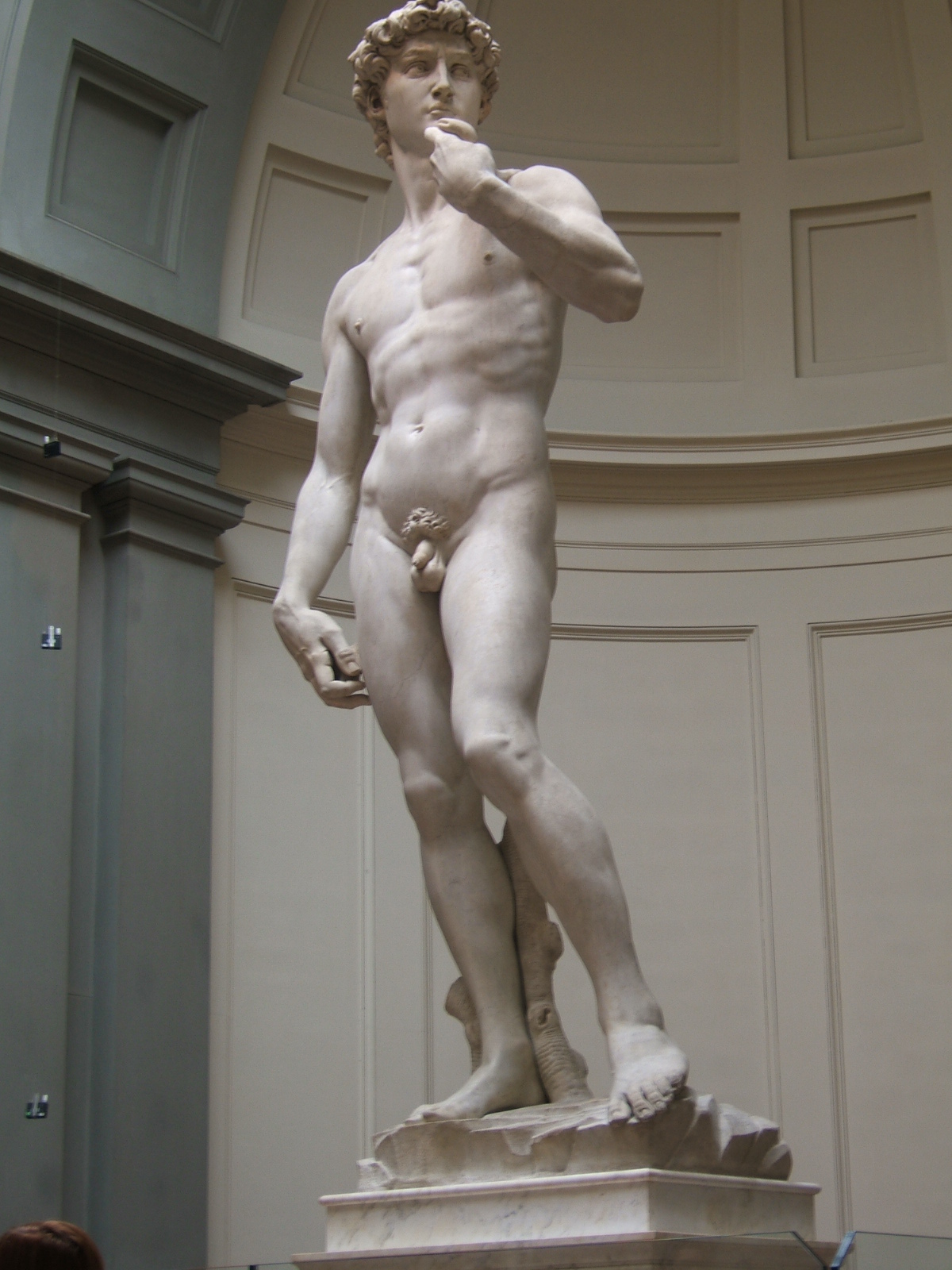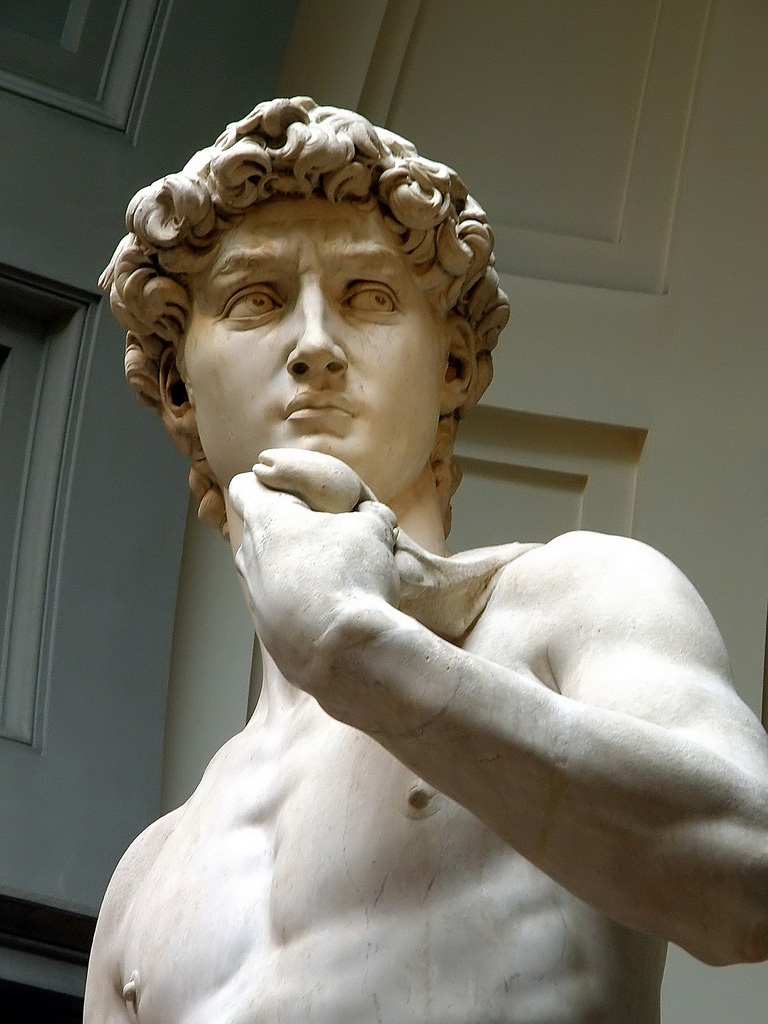
In 1501, several local corporations in Florence (the Guild of Wool Merchants, the representatives of the Duomo, the Office of Works for the Cathedral of Florence) commissioned Michelangelo to create a sculpture inspired by the kings and prophets of the Old Testament, to be placed on the external buttresses of the apse of the Cathedral of Santa Maria del Fiore. For this task, he received a block of Carrara marble, about 5 and a half meters tall, nicknamed “the giant,” which had been unsuccessfully attempted by various sculptors since 1464. After a month, Michelangelo began sculpting a monumental sculpture, extracting from the stone what he referred to as the “soul” of the stone.
This is how the genius artist saw the artistic process; for Michelangelo, a block of stone concealed a form, an image within it. His work was to try to “bring to light” that form by removing all the excess stone that covered it. That’s why the sculptor succeeded where others failed, taking a colossal block of stone and transforming it into one of the greatest masterpieces of art.
So much so that, two years later, upon seeing it completed, the citizens of Florence abandoned the original idea of placing it in the previously planned location and instead erected it in the Piazza della Signoria as a symbol of the freedom of the Florentine Republic.
In the David, you can sense the strong character of his sculptor, who, at not yet 30 years old and after creating significant works like the Pieta in the Vatican, returned to Florence determined to leave his personal mark with the execution of David, which caused him problems with other sculptors. The result was a colossal David, distinct from those created by other contemporary artists, such as Donatello and Verrocchio.

Tomb of Giuliano de Medici -The Night

Tomb of Giuliano de Medici -The Dawn

While these artists represented the Hebrew king as a pubescent androgynous youth with a sling and a shepherd’s hat, along with the remains of the defeated giant Goliath, Michelangelo departed from this iconography, portraying him as a mature man, following the model of classical Greek athletes. He is closer to the Apollonian beauty of a Doriforus than the Hebrew shepherd of his predecessors.
However, the Florentine sculptor also deviated from classical Greek harmony, infusing it with terribilità, which is evident in David’s powerful anatomy, his stern gaze directed forward, and the work of proportions, with the hands and head slightly larger in comparison to the classical canon. This was done to ensure it would be visible from a distance, to counterbalance the proportions
It is debated whether David is depicted in the moment before or after the attack on Goliath. The sling is barely distinguishable, and there is no trace of the Philistine. The most accepted interpretation is that it represents the moment just before the attack, where the hero makes the decision to strike his opponent. This decision can be seen in the relaxed tension of his body, like a bowstring about to be drawn. This is aided by the contrapposto of his left leg, forming an arch opposed to the other leg. It is also seen in the relaxed drop of the right arm compared to the flexed left arm, which holds the sling and stone. The furrowed brow and the fixed gaze forward contribute to this impression.

Two lines of force can be observed: one vertical from the right arm and leg, on which he stands, and the other exerted by the left arm and slightly flexed leg in a less pronounced, less “Praxitelean” contrapposto, in contrast to that seen in Donatello’s David.
The realism of the musculature and contained strength is what characterizes terribilità, which will be evident in later works, notably the Moses, of which it is said that Michelangelo struck it with a chisel uttering the words, “Rise and walk!”
This impression is reinforced by the quiet strength of David, conveying the feeling that we are not looking at a cold block of marble but something endowed with life.
Cristina Díaz
Here you can see some of our reproductions of Michelangelo’s David in our catalog:








